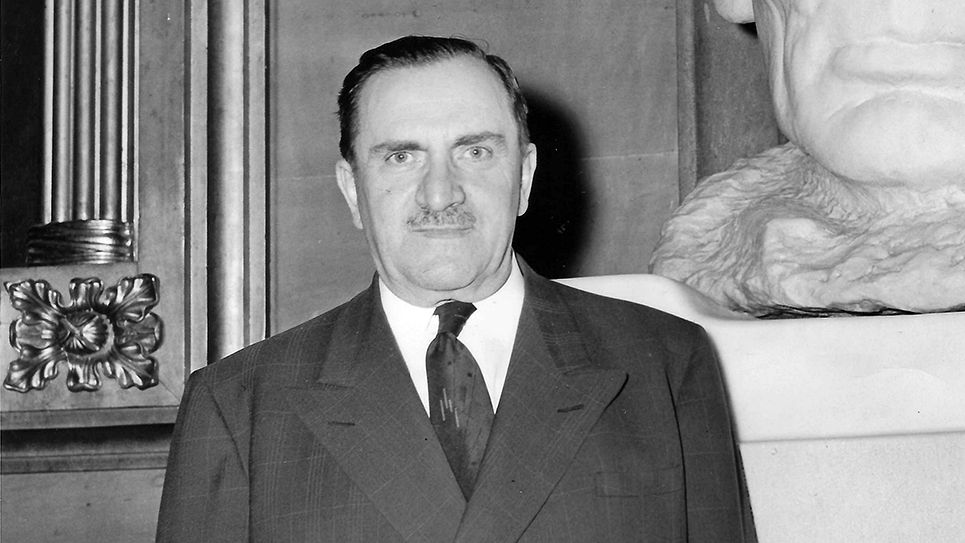By Ray Hill
Bob Dole was the last presidential nominee who was a veteran of the Second World War. Few people who saw it will ever forget the moving moment when Bob Dole, then confined to a wheelchair asked to be raised to a standing position so he could salute his friend John McCain farewell. For 79 of his 98 years, Bob Dole served his country in one capacity or another.
From the tiny town of Russell, Kansas, Bob Dole was a strapping young man, an athlete when he signed up to serve following the bombing of Pearl Harbor by the Japanese Empire. As the war was grinding to a slow and bloody halt, the Germans were fighting a desperate rearguard retreat in Italy and were largely hidden in the mountains in the northern part of the country. The 10th Mountain Division was an elite group composed mostly of climbers and Olympic skiers who were believed to be able to flush out the remaining German soldiers from their perches in the mountains.
“I thought it was mighty odd that a kid from Kansas who had seen a mountain up close only once in his life would be assigned to lead a platoon of mountain troops. We Kansans didn’t ski much,” Dole wryly remembered in a volume of his memoirs, “One Soldier’s Story.”
Initially, Bob Dole was injured by the fragments from an exploding grenade. The injury was in a leg and wasn’t serious, although Dole recalled the wound “hurt like crazy.” The future senator wrote a medic “patched me up good as new.”
Bob Dole led his unit up toward their goal, Hill 913, largely crawling as the Germans picked off Dole’s fellow soldiers one by one and rained down withering machine gun fire. Ninety-eight Americans died that day in April 1945. Dole had been looking for the company radio operator to ask for reinforcements when he saw the man crumpled over in a pool of blood, radio still clutched in his hand. Bob Dole was pulling the radio operator into a shell hole when his entire world changed.
“I felt a sting, as something hot, something terribly powerful crashed into my upper back behind my right shoulder,” Dole wrote.
Bob Dole never knew if it was motor fire, machine gun fire or shrapnel from an explosion, but it left him paralyzed from the neck down. He lay face down in the blood and dirt and at first believed his arms were missing as he couldn’t see them. Two comrades pulled the badly wounded Dole to safety. Dole was barely conscious, passing out from the pain and the loss of blood. The young soldier was given morphine and a sergeant dipped a finger in Dole’s blood to scrawl “M” on the Kansan’s forehead, signifying a dose of morphine had been administered as a precaution. Another dose would have been fatal. Two medics sent to retrieve Dole and another wounded soldier were killed; the two waited six hours, Eventually, Bob Dole was carried off the mountain in a stretcher and taken to a military hospital. What the young soldier heard there was hardly encouraging; doctors assessed his injuries, concluding Dole was in far worse shape than they originally believed. The consensus was Bob Dole would quite likely die and soon. The most optimistic of doctors believed Dole might live but would surely never walk again.
Bob Dole was placed in a body cast where he lay in bed for weeks. It was just the beginning. Dole, once 6’2 and weighing 192 pounds, withered down to 122 pounds. The future senator recalled in his memoir the first time his mother saw him she could not help herself and burst into tears. Dole’s injuries were bad enough, but he almost died from a kidney infection when his temperature climbed to a terrifying 108.7 degrees. Wrapped in ice packs, Dole’s life was saved by a new drug: penicillin. Doctors removed the infected kidney when Dole’s fever dropped enough to allow the surgery.
Bob Dole had plenty of spare time and contented himself by spending long hours in trying to wiggle a toe or lift a knee. The feeling was slowly returning to his legs; after six months he was able to finally stand. The effort caused tremors to rack his entire body.
Dole was moved to Percy Jones Army Hospital in Battle Creek, Michigan, which specialized in helping those soldiers suffering from paralysis and the amputation of limbs. Bob Dole remained there for two years. Eventually, he was able to walk once again and regained some use of his left arm. Dole’s right arm remained paralyzed. Many of us who met Senator Dole recall the pen placed in the closed fist of his useless right hand, which was to discourage anyone from grabbing it. Bob Dole shook hands with his left hand. He also taught himself to write with his left hand.
Bob Dole was slow to surrender his ambitions but a doctor who spoke to him kindly, but also bluntly. Dr. Hampar Kelikian was an immigrant from Afghanistan and his candor motivated Dole. “Kelikian inspired me to focus on what I had left and what I could do with it, rather than complaining what had been lost,” Dole remembered. Bob Dole went to college and won a bachelor’s degree and a law degree.
The complex at Percy Jones is now named for three men, all of whom served in the United States Senate, and recovered there: Bob Dole, Daniel Inouye, and Philip Hart. Inouye lost an arm fighting in World War II.
Dole won his first elective office in 1950, winning seat in the Kansas House of Representatives. Two years later, he became county attorney for Russell County.
Dole won a seat in Congress in 1960 and remained there until he ran for the United States Senate seat of Frank Carlson, who was retiring. Dole beat a former governor in the GOP primary. Dole faced a strong challenge from Dr. Bill Roy, a Democratic congressman during 1974, which was a terrible election year for Republicans due to the Watergate scandal and the pardon of Richard Nixon by his successor, Gerald Ford. Ford volunteered to campaign for Dole, who quipped after the pardon he had received about all the help he could stand from the president. Dole’s campaign was the first to use a commercial utilizing a campaign poster of the senator with mud being slung at it. Dole eked out a victory over Roy and then became an institution in Kansas.
Bob Dole’s legislative accomplishments were many. Dole remained an advocate for the disabled, both in Congress and out. Senator Dole pushed Republicans to support the Martin Luther King holiday.
Dole was Ford’s running mate in 1976, which was the first time Americans were exposed to the senator’s sometimes caustic wit. The Kansan ran for president three times, finally winning the GOP nomination in 1996 to face incumbent Bill Clinton. It was President Clinton who awarded Dole with the Presidential Medal of Freedom for his military service as well to the American people. Dole was awarded the highest civilian award that Congress can bestow when he received the Congressional Gold Medal in 2018.
When Bob Dole resigned from the United States Senate during his presidential campaign, he plainly told the assembled press he had “nowhere to go but the White House or home.”
Former Clinton cabinet officer and former congresswoman Donna Shalala remembered Bob Dole as “funny, smart and kind.” Dole never saw himself as a victim and worked hard to overcome odds that oftentimes must have seemed insurmountable. The young soldier from Russell, Kansas became a towering figure, a giant in our country through determination, grit, intellect, and just plain hard work. Bob Dole was the kind of man who had the respect of both friends and political foes. The senator was also a very easy man to admire.
Dole’s passing really is the end of an era. Ninety-eight years old and one of the rapidly diminishing number of men and women who literally kept the world free. Bob Dole loved his country and gave everything he had to America. Dole really was a part of America’s “greatest generation.”






